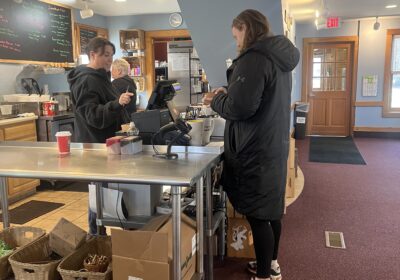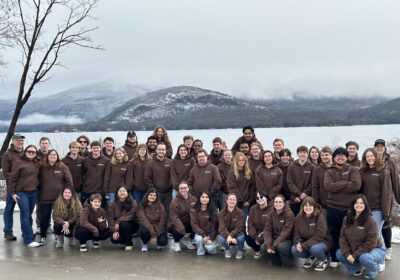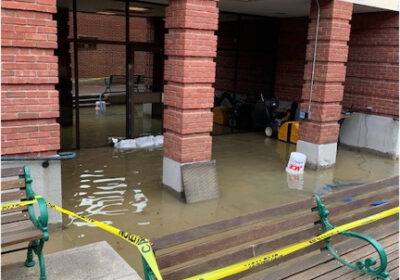Clever trolls distort the truth online

It’s not that hard to be a troll these days. And that’s not a reference to the creepy dolls with the fuzzy hair.
On March 26, a GIF of Parkland student Emma González tearing apart the Constitution went viral.
Only, she didn’t tear up the constitution. The GIF had been altered.
The original GIF showed González ripping apart a shooting target during a Teen Vogue photoshoot. It wasn’t long before someone manipulated the content.
González’s skin was whitened, dark circles were burned around her eyes, and the shooting target she tore in half became the U.S, Constitution.
But no ordinary “troll” altered the GIF to this level of expertise. It was convincing. The level of skill required to alter a still-image is child’s play in comparison to a video.
“Still photos and video are two totally different things,” said Video Production professor Andrew Wilson. “Everyone talks about photoshopping images, and I teach an intro to computing class, and probably anyone that has taken my intro class could put the constitution on that target as a still image.”
Working with the original clip of González and the target, Wilson decided to find out just how long it would take for someone to replace the target with something else.
“Dave (professor David Blow) sent me the cover of the Spartan to see if I could do it, and I timed myself, and I spent about 40 minutes on it. And maybe got 20 percent of the way there,” he said.
“I used After Effects. I’m using tools that anyone can buy. It got complicated, and I could probably make it good with six hours of work.”
Wilson also mentioned that the general public is relatively aware of photoshopped images, but most people aren’t used to seeing manipulated video content.
“That fake was really good. It was really well done. I looked at not just the GIF images, I was looking at the YouTube HD versions, and they were really good. Whoever did that had a significant amount of training and experience and software. I am probably capable of it, but I just gave up after like 45 minutes. If someone is really motivated — someone got paid some good money to do that. That would be my guess.”
So who is altering content like this?
“That’s the 65 million dollar question,” said Political Science professor Rich Clark.
“We know about, in eastern Europe, these labs where they have people trolling all day. And they’re pretty good,” he said.
“We’re all used to getting the broken-english sort of email scams for money, and those are usually people operating on their own. The trolls and the people creating this stuff really are far more sophisticated and well-funded.”
The Parkland students in particular have been victims to the thousands of “trolls” on social media, but they are taking things to a new “troll-level,” which to Clark, is concerning.
“We’ve seen attacks on these kids that are personal, and sometimes baseless, and just mean-spirited. They aren’t attacks on their positions, they’re attacks on the kids,” he said.
“There’s no easy defense. No button to click. The defense against fake news and media manipulation is education. It’s becoming informed. We’ve become so used to getting information instantly, that it comes at us so fast that we don’t have the time to process it,” stated Clark.
Senior Digital Media major Shane Hurley believes the best defense against spreading false information is double checking the sources of information we are consuming.
“We can never be too thorough in our search for the truth nowadays. We have to act like journalists to make sure the news we are spreading is 100 percent true,” he said. “There shouldn’t be a place on social media for the people who are spreading fake news.”
The amount of pressure the media faces on a daily basis to combat fake news is unrelenting and ruthless, but according to Clark, TV and print news are still go-to sources for people seeking information.
“Say what you will about mass media, but they have been gatekeepers. Are they going to get it wrong? Always. They’ve always gotten it wrong. But they’ve corrected it. They’ve printed retractions. And they’ve done their best to get it right when they can.”
The important argument is no longer about which side is right or wrong; it’s about a much larger problem society is currently facing, Clark said.
“I think the bigger thing is that there are a bunch of people out there manipulating public opinion through complete falsehoods. Despite all of that, we’ve done nothing, absolutely nothing to mitigate the problem when we have a very important set of midterms coming up, and then another presidential election in two years. We know we were attacked, that our democracy suffered, and we’ve done nothing yet,” said Clark authoritatively.
But media manipulation isn’t new, and Katye Munger, director of Digital Media, reminds us we’re surrounded by it every day.
“If you think about celebrities editing their photos, which gives people a false sense of what they “should” look like, or advertisers building a fake product to make it the real product seem more appealing in an ad, or even paparazzi altering photos to spread rumors about celebrities, even tabloids trying to make a quick buck. Media manipulation has been happening in front of our eyes for years, it is just becoming more available to everyone through technology,” Munger said.
Is there anything we can do to help society understand this problem?
“We need to continue to help educate each other both about the dangers of false information and about the internet in general. I think about the testimony Facebook founder Mark Zuckerberg made in front of the Senate and how the questions mostly centered around their lack of knowledge about the internet,” Munger said.
“More knowledgeable senators, in this example, would help fight for the protection of the internet and help prevent the spreading of false information. If our lawmakers do not know what the issue is, how can they help enact change?”






